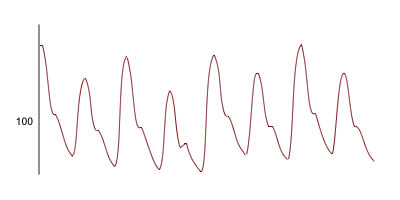Pulsus alternans
Editor-In-Chief: C. Michael Gibson, M.S., M.D. [1]; Associate Editor(s)-in-Chief: Varun Kumar, M.B.B.S.
Overview
Pulsus alternans is a physical finding with arterial pulse waveform showing alternating strong and weak beats.[1] It is almost always indicative of left ventricular systolic impairment, and carries a poor prognosis.
Pathophysiology
In left ventricular dysfunction, the ejection fraction will decrease significantly, causing reduction in stroke volume, hence causing a increase in end-diastolic volume. There may initially be a tachycardia as a compensatory mechanism to try to keep the cardiac output constant. As a result, during the next cycle of systolic phase, the myocardial muscle will be stretched more than usual and as a result cause an increase in myocardial contraction, related to the Frank–Starling physiology of the heart. This in turn results in a stronger systolic pulse.

Related Chapters
References
- ↑ Euler D (1999) Cardiac alternans: mechanisms and pathophysiological significance. Cardiovascular Research. Vol. 42. P. 583-590. PMID 10533597